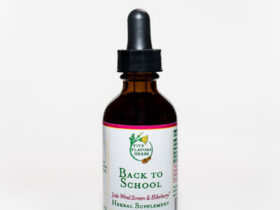Bronchial asthma is a long illness that occurs when your airways get narrow and swollen with excessive mucus. In the United Kingdom, asthma affects both children and adults. According to studies, this lung illness is currently the most common long-term medical health issue in UK children. Statistics reveal that 1 in 11 children in the country currently suffers from this lung illness.
If your kid is currently suffering from asthma, the good news is there are a few effective ways to help manage the asthma symptoms. Read further to discover all you need to know about how to manage children’s asthma.
Why exactly is it significant?
Triggers, such as cold, pollen, and many respiratory illnesses cause children (asthma sufferers) to feel irritation along their lungs and airways. Apart from irritation, childhood asthma can also cause many other annoying symptoms in children every day. Sadly, these symptoms can always interfere with the children’s everyday life.
Furthermore, when childhood asthma is left untreated, it can lead to chronic and life-threatening asthma episodes. Although asthma conditions in children and adults have a lot in common, childhood asthma has unique obstacles. In most cases, children (asthma sufferers) are likely to visit the hospital more often. Emergency room visits and absence from school are a few other factors that make childhood asthma unique.
As early as childhood asthma is, one will expect it to be curable. Sadly, this lung illness in children is incurable. Yes, childhood asthma symptoms can always persist in a patient until adulthood. Instead of eliminating the illness, the best you can do is to consider asthma treatment or therapy to manage the symptoms and keep your kid’s developing lungs protected.
Statistics for childhood asthma in the UK
- 1 million children in the United Kingdom are shifting to asthma therapy.
- In England, Wales, and Scotland, the rate of emergency hospital asthma admissions in 2017/2018 for children under 19 years old, was reported to be 174, 165, and 157, respectively per 100,000 children.
- Roughly one-quarter of children with asthma have PAAP or personalized asthma action plans.
- Roughly half the number of childhood asthma sufferers have experienced an asthma attack in the past year.
- Secondhand smoke can always worsen a child’s asthma condition. Studies show that roughly 400,000 out of 1 million children are currently in this mess.
Warning signs your kid may have childhood asthma
Today, the three most common warning signs that your child might have childhood asthma are frequent and constantly increasing coughs due to viral infection, cold air, or certain activities. When this happens, it can result in:
- Breathing difficulties,
- Whistling or wheezing sounds while exhaling, and
- Constriction in the chest.
If your kid is currently showing any of the above symptoms, the best you can do is to take him/her to your physician. While asthma treatment might not completely cure asthma, early therapy might be effective to manage the symptoms and avoid unnecessary asthma attacks.
Furthermore, once you’re sure your child has asthma, the best you can do is develop a personalized asthma action plan or PAAP. This plan will help monitor your kid’s asthma symptoms and assist you and your caregivers in better managing the symptoms. A good PAAP will also let you know what to do when your kid experiences an attack.
Childhood asthma treatments
Asthma medications are effective in helping children manage their symptoms. These medications are mostly available in the form of asthma inhalers. However, you’ll find some asthma medications available in liquid and tablet forms.
Further speaking of asthma medications, you need to understand that they are available only in two classes; quick-relief asthma medicines and long-term control asthma medicines.
As the name suggests, quick-relief medications work pretty quickly to open your kid’s correlated airways. These asthma medications are highly recommended during a flare-up. As effective as these medicines are, however, you need to understand they only have short-lived effects
Long-term asthma medicines, on the other hand, are most effective for preventing asthma symptoms from surfacing. Unlike quick-relief medications, these asthma medications are effective in alleviating inflammation that causes excessive mucus in the airways. Asthma Inhalers, such as this Ventolin Inhaler, are long-term medicines for children with asthma. They are “maintenance” asthma medications even for children that are feeling healthy.










